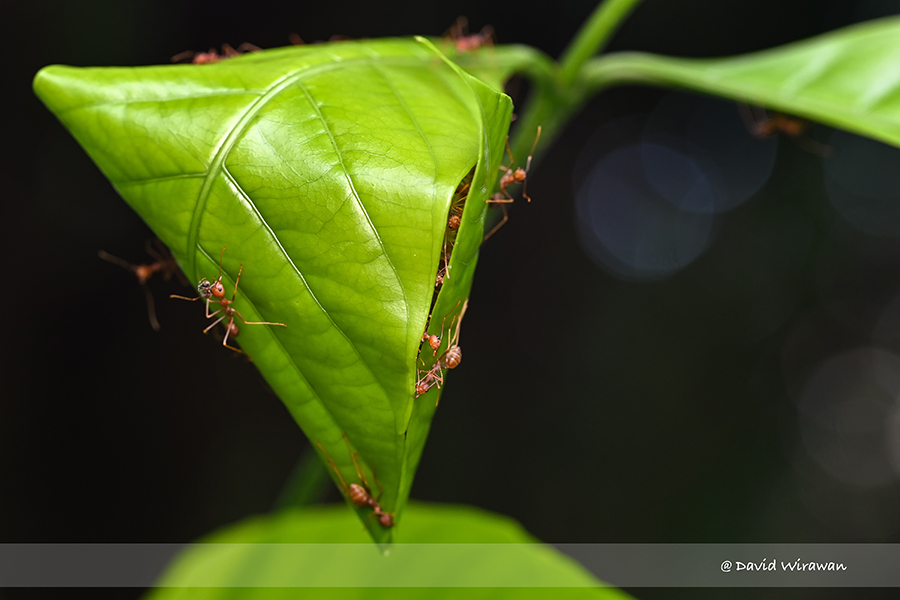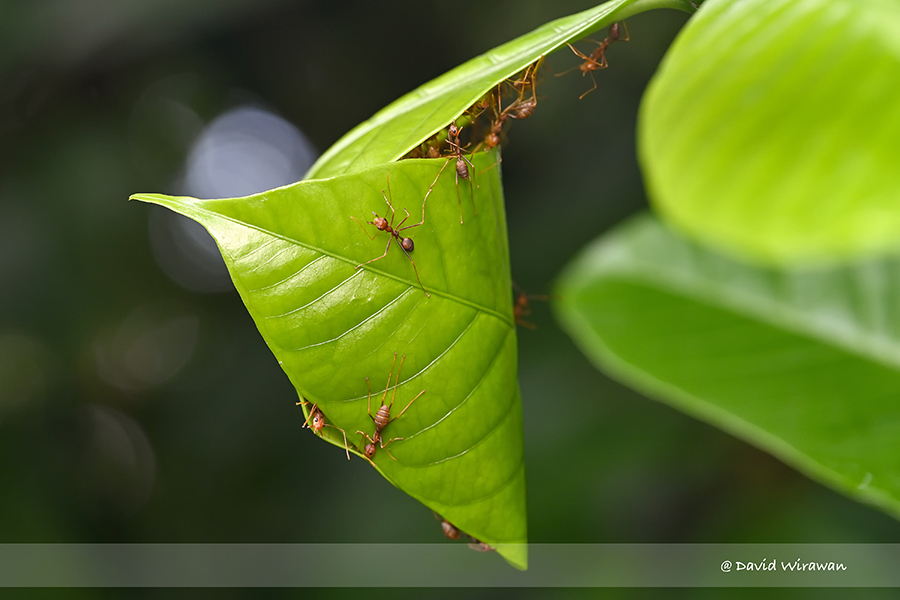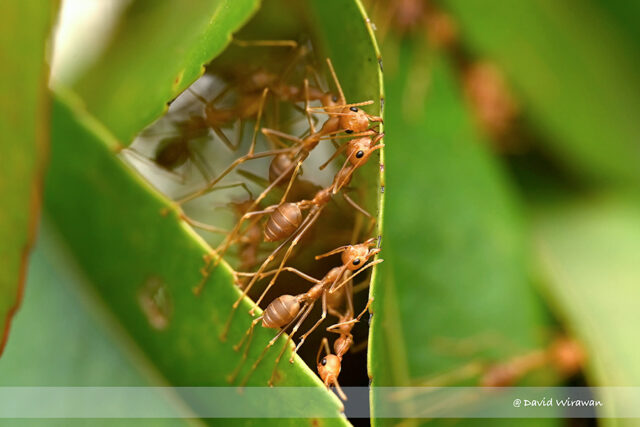Have you seen this kind of Nest?

some nest sizes are quite big and actually quite neat, as they make it by connecting ( weave ) the leaves.
When I first time saw it, I thought is a bird’s nest, as I saw it quite high on the tree. Until I managed to see it clearly then I can spot many ants, then I realised actually it’s an ant’s nest.
I was quite amazed and curious about how the ants constructed the nest, and I finally captured some images of the process and also find the information about it.

Weaver ants or green ants (genus Oecophylla) are eusocial insects of the family Formicidae (order Hymenoptera). Weaver ants live in trees (they are obligately arboreal) and are known for their unique nest-building behaviour where workers construct nests by weaving together leaves using larval silk. Colonies can be extremely large consisting of more than a hundred nests spanning numerous trees and containing more than half a million workers. Like many other ant species, weaver ants prey on small insects and supplement their diet with carbohydrate-rich honeydew excreted by small insects Wikipedia
Here are some photos of how the ant’s teamwork during the nest-building process.





Weaver ants are named for their method of nest construction. The nests are made of leaves folded or fastened together to form tight, tent-like compartments. The leaves are held in place by seams of silk spun by the larvae, which the major workers employ like shuttles for weaving the nests. This nest building is one of the most remarkable instances of social cooperation among lower animals. Once the weaver ants have chosen a tree branch suitable for a nest they spread out on the leaves of the branch and begin to pull on the tips and edges. When an ant succeeds in turning up a segment of a leaf, nearby workers are attracted to that part of the leaf. and soon there is a small group of ants pulling in unison.
When a leaf is broader than the length of an ant’s body. or when two leaves must be pulled together across a wide space. the workers form living bridges between the points to be joined. Then some of the ants in the chain climb onto the backs of their neighbours and pull backwards, thus shortening the chain and bringing the leaf edges together. When the leaves have been manoeuvred into shape, some of the ants remain on them, employing their legs and mandibles to hold the leaves in place. Other ants go back to already established nests and return to the new site carrying partly grown larvae. The workers wave the larvae back and forth across the leaf seams. This causes the larvae to release threads of silk from gland openings located just below their mouth. Thousands of these threads woven into sheets are strong enough to hold the leaves in place. Sheets of silk are also spun to make circular entrances and outer galleries leading to the interior of the new nest (Hölldober and Wilson, 1977).
Source: Wiki NUS – Oecophylla smaragdina – Asian Weaver Ant














